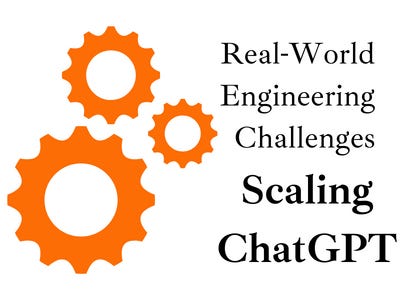Scaling ChatGPT: Five Real-World Engineering Challenges

🌈 Abstract
The article discusses the engineering challenges faced by the OpenAI team in scaling ChatGPT, the popular AI chatbot, to meet the explosive demand after its launch. It covers topics such as the importance of GPUs, how ChatGPT works, and five key scaling challenges the team had to overcome.
🙋 Q&A
[01] How ChatGPT works
1. Questions related to the content of the section?
- ChatGPT works by taking input text, tokenizing it, creating embeddings, multiplying the embeddings by model weights, and then sampling the next most likely token to generate the output text.
- The Transformer architecture used by ChatGPT has a characteristic called self-attention, where each token is aware of every other token. This leads to a quadratic scaling challenge as the context length increases.
- To address the quadratic scaling, the team uses a technique called KV cache, which stores intermediate computation results to avoid recomputing them.
[02] Scaling Challenges
1. What were the five key scaling challenges the team faced?
- KV cache and GPU RAM management: Efficiently utilizing the limited GPU RAM to store the KV cache and avoid expensive cache misses.
- Optimizing batch size: Finding the right balance between compute utilization and memory bandwidth to fully saturate the GPUs.
- Identifying the right metrics to measure: Moving beyond simple GPU utilization metrics to track KV cache utilization and arithmetic intensity.
- Sourcing GPUs from wherever available: Dealing with GPU supply shortages by using GPUs from different geographic regions and cloud providers.
- Inability to autoscale: The lack of available GPUs to automatically scale the system as demand increased.
2. How did the team address these challenges?
- For the KV cache challenge, they focused on maximizing GPU RAM utilization and minimizing cache misses, which have a quadratic impact on performance.
- For batch size optimization, they used the concept of "arithmetic intensity" (FLOPs/byte) to find the right balance between compute and memory bandwidth.
- They developed custom metrics to track KV cache utilization and other bottlenecks, rather than relying on simple GPU utilization.
- They sourced GPUs from multiple cloud providers and regions to build a globally distributed fleet, prioritizing overall GPU availability over local latency.
- However, the team was ultimately constrained by the lack of available GPUs to autoscale the system as demand grew.
[03] Lessons Learned
1. What were the key lessons the team learned from scaling ChatGPT?
- In early scaling, both low-level details (like KV cache optimization) and high-level system design (like the global data center strategy) were important.
- They had to adapt their scaling approaches to the unique constraints of the LLM domain, rather than relying on traditional scaling practices.
- Diving deep into the lowest-level implementation details was crucial to understanding and optimizing the system.
- The pace of development and the scale of challenges will only continue to grow as the technology advances.
</output_format>
Shared by Daniel Chen ·
© 2024 NewMotor Inc.